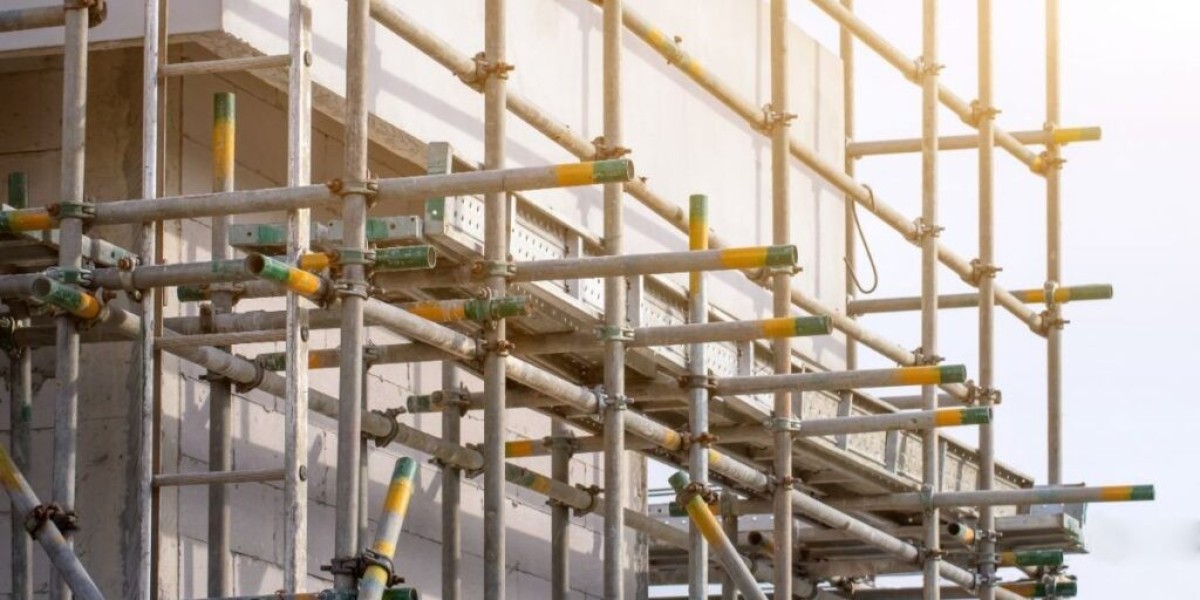Construction and renovation projects require innovative and adaptable solutions to meet specific challenges, especially when working at heights or in hard-to-reach areas. Cantilever Scaffolding Services provide just that, offering robust and efficient systems to tackle these demands. But why should you consider using cantilever scaffolding for your project? This blog will guide you through the benefits, applications, and structure of cantilever scaffolding while explaining how it could boost your project's efficiency and safety.
Cantilever scaffolding is not just another type of scaffolding. It is a specialized structure designed to support loads where a traditional base is not accessible. By exploring its features, variations, and practical uses, you’ll understand how this solution can be a game-changer for your upcoming construction or maintenance work.
What Is Cantilever Scaffolding?
Cantilever scaffolding, sometimes called a cantilevered scaffold, is a structure that extends horizontally from a fixed support. Unlike typical scaffolding, which relies on a broad base for stability, cantilever scaffolding is supported by needles projecting from walls or other structures. These needles provide the necessary balance and firmness to ensure safety and usability.
Cantilever scaffolding is commonly used where the ground conditions are unsuitable for erecting a traditional scaffold tower. For instance, projects requiring access above a busy roadway, over a river, or alongside sensitive foundations often rely on this system. It allows workers to carry out their tasks efficiently while ensuring that neither foot traffic nor the surrounding environment is disrupted.
Features and Components of Cantilever Scaffolding
To understand cantilever scaffolding services, it’s critical to break down the core elements that define this system:
- Needles: The beams (usually steel or timber) projecting out from walls to provide support.
- Standards: The vertical poles connected to the needles.
- Braces: Diagonal supports to stabilize the entire structure.
- Platforms: Staging areas for workers, tools, and materials.
These components collectively ensure a safe yet adaptable structure. Depending on the project requirements, cantilever scaffolding can be customized. For situations requiring height adjustments or varying horizontal extensions, structures like a cantilever scaffold tower or a scaffold tower with cantilever are often employed.
How Does Cantilever Scaffolding Compare to Traditional Scaffolding?
Traditional scaffolding relies heavily on ground support. While this works for typical sites, it can pose challenges in scenarios where the surface is uneven, unsupported, or obstructed. This is where cantilever scaffolding serves as the ideal solution. By anchoring the structure to the building or wall, a cantilevered scaffold ensures safety without using the ground as its fundamental anchor.
Applications of Cantilever Scaffolding Services
You might wonder about the practical scenarios where cantilever scaffolding services are indispensable. Here are some common situations where these systems shine:
Overhang Repairs and Maintenance: When sections of a building extend beyond the foundation, like a balcony or roof overhang, accessing them with traditional scaffolding is challenging. A scaffold tower with cantilever becomes the perfect solution for such scenarios.
Industrial Sites with Restricted Ground Space: Factories and plants often feature machinery and structures that limit usable ground area. Cantilever scaffolding provides efficient access without disturbing day-to-day operations or compromising ground-level equipment.
Urban Construction Projects: Projects in crowded urban areas often face space constraints. Utilizing a cantilever scaffold tower, workers can carry out their tasks above traffic or in narrow spaces.
Tilted or Weak Foundations: When the ground beneath an area cannot support heavy scaffolding, cantilever systems come into play, stabilizing the platform via wall attachments and braces.
These applications highlight why cantilever scaffolding services are vital across various industries, from construction to maintenance and even restoration work.
Why Choose Cantilever Scaffolding Services?
When considering your project's scaffolding needs, it’s important to evaluate the specific advantages offered by cantilever systems. These benefits include:
Enhanced Safety: The unique design of cantilever scaffolding minimizes risks in situations where ground support and stability are compromised. Workers benefit from secure platforms in areas that may otherwise pose safety hazards.
Time Efficiency: Installing a cantilever scaffold is often quicker for specific project types, as it circumvents the need to create an entirely ground-supported structure.
Cost-Effectiveness: By reducing the amount of material needed for ground-based supports and creating a structure that adapts to the existing architecture, cantilever systems can save costs compared to elaborate conventional setups.
Environmental Considerations: Cantilever scaffolding often has a smaller footprint than traditional scaffolding, reducing its impact on surrounding ecosystems or urban landscapes.
For your project, opting for cantilever scaffolding services means working with a system tailored to unique challenges. These benefits make them the preferred choice for complex projects requiring ingenuity and expertise.
How to Ensure a Successful Cantilever Scaffold Setup
A successful cantilevered scaffold installation depends on proper planning and technical execution. Here are key elements to keep in mind (without overloading this blog with technical jargon):
- Engineering Assessment: Ensure the wall or structure anchoring the system is thoroughly analyzed for strength and stability.
- Professional Installation: Engage experts with experience in configuring and assembling both simple cantilever scaffolds and more complex cantilever scaffold towers.
- Routine Inspections: Regular checks ensure that all braces, standards, and platforms remain secure as work progresses.
- Compliance with Standards: Always adhere to any local and international safety regulations concerning scaffolding cantilever systems.
By carefully managing these factors, you harness the full potential of cantilever scaffolding services, protecting workers and enhancing efficiency.
The Future of Cantilever Scaffolding
With growing demands for sustainable and space-efficient construction solutions, the use of cantilever scaffolding services is set to rise. Innovations like modular cantilever scaffolding systems and advancements in lightweight materials are enabling safer, more adaptable designs. These developments promise even greater flexibility in tackling the architectural challenges of tomorrow.
Final Thoughts
Whether you’re dealing with a crowded urban site, a scenic bridge repair, or maintenance in a bustling industrial plant, cantilever scaffolding offers a flexible and reliable solution. Its ability to adapt to tight spaces, avoid ground-level limitations, and ensure worker safety makes it indispensable for modern construction and restoration.
By leveraging cantilever scaffolding services, you not only improve efficiency but also ensure project success in challenging conditions. With its specialized design tailored to unique site limitations, cantilever scaffolding is truly a vital tool for projects requiring innovation and resilience.








